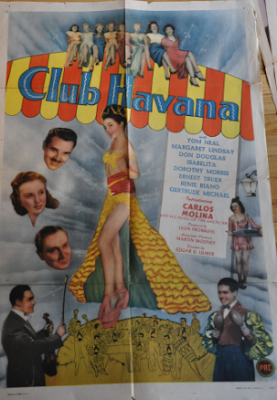The MGM publicity department must have had quite a chore promoting Men Must Fight. For if any movie could rightly be described as schizophrenic, Men Must Fight is it. How do you properly promote a movie that spans the genres of romance, sci-fi, pro-war, anti-war, family drama and social uprising? A movie made in 1933, but takes place in 1918 and 1940? The answer: apparently not very much. I couldn't find one poster online. And this from a blog that found material for Inflation, The Devil with Hitler and How Doooo You Do!!! (I never tire of writing that title.)
So much happens in Men Must Fight's 72-minute running time that a simple outline doesn't do it justice. After a three-day affair with a nurse, World War I pilot Geoffrey Aiken is killed during his first flight. The nurse, named Laura, discovers she's pregnant with his child. Edward Seward, an older officer
 |
| One man's baby is another man's bad memory. |
In 1940, Seward, now Secretary of State, sees his peace treaty with the country of Eurasia go up in flames when our ambassador is assassinated. Still haunted by her lover's death, Laura organizes a major peace movement. In turn, her son Bob (who believes that Seward is his real father) refuses a military commission that would see him create a powerful chemical gas to use on the enemy. Only when his hometown of New York comes under attack by Eurasian forces -- and he finally learns his father was a war hero -- does Bob shake his pacifist ways. He accepts the commission after all -- not as a chemist on the homefront as intended, but a pilot on the front lines.
 |
| Bombs over New York. |
Or does it? In the final scene, Bob files off to war as his mother, grandmother and wife Peggy watch from below. Laura and Peggy try to be optimistic, but Grandmother Seward is more clear-eyed, preferring that women rule the world, leaving the men to "crow and strut and be ornamental like roosters. That's the function of the male." Peggy then unknowingly echoes Laura's vow made years earlier: "If I ever have a child, he'll never go through this." Replies Grandma, "Fat luck you'll have anything to say about it. You'll be just another mother." Rarely has a movie ended on a more cynical yet honest line of dialogue. And yet the closing theme, a jolly military march, negates that powerful message. It's as if studio didn't exactly know what to make of its own production.
 |
| "I love you, mom -- er, sweetheart." |
 |
| "Handsome? Who, me?" |
Not to worry, though -- once Bob volunteers for certain death, he's back in stepdad's good graces. It's an unspoken irony that Edward originally arranged to have him serve on the homefront "where he's needed" rather than in combat. Just another perk of government service!
 |
| I wouldn't move out of this place, either. |
 Ironies and contradictions like these abound in Men Must Fight, one of MGM's most genuinely interesting 1930s releases. You have to give credit to a movie for predicting world war breaking out in 1940 -- one year before our involvement in real life. And if that's not some neat prognostication, the peace rally is held at the New York Coliseum, which opened in 1956! Although "credit" wouldn't be the right word to use when the destruction of the Empire State Building resembles that of the World Trade Center. Whatever audiences thought in 1933, viewing Men Must Fight today is alternately a compelling, amusing and, ultimately, eerie experience.
Ironies and contradictions like these abound in Men Must Fight, one of MGM's most genuinely interesting 1930s releases. You have to give credit to a movie for predicting world war breaking out in 1940 -- one year before our involvement in real life. And if that's not some neat prognostication, the peace rally is held at the New York Coliseum, which opened in 1956! Although "credit" wouldn't be the right word to use when the destruction of the Empire State Building resembles that of the World Trade Center. Whatever audiences thought in 1933, viewing Men Must Fight today is alternately a compelling, amusing and, ultimately, eerie experience. For another example, take the post-movie career of Phillip Holmes. The actor -- who, as Bob, played the pacifist-turned-air corpsman -- volunteered for the Royal Canadian Air Force in 1942. Did it cross his mind that his onscreen father in Men Must Fight died in action while serving in America's corresponding military branch during wartime?
We'll never know. Holmes died in a mid-air collision while still in training.
**********************
From Men Must Fight: the bombing of New York.


































